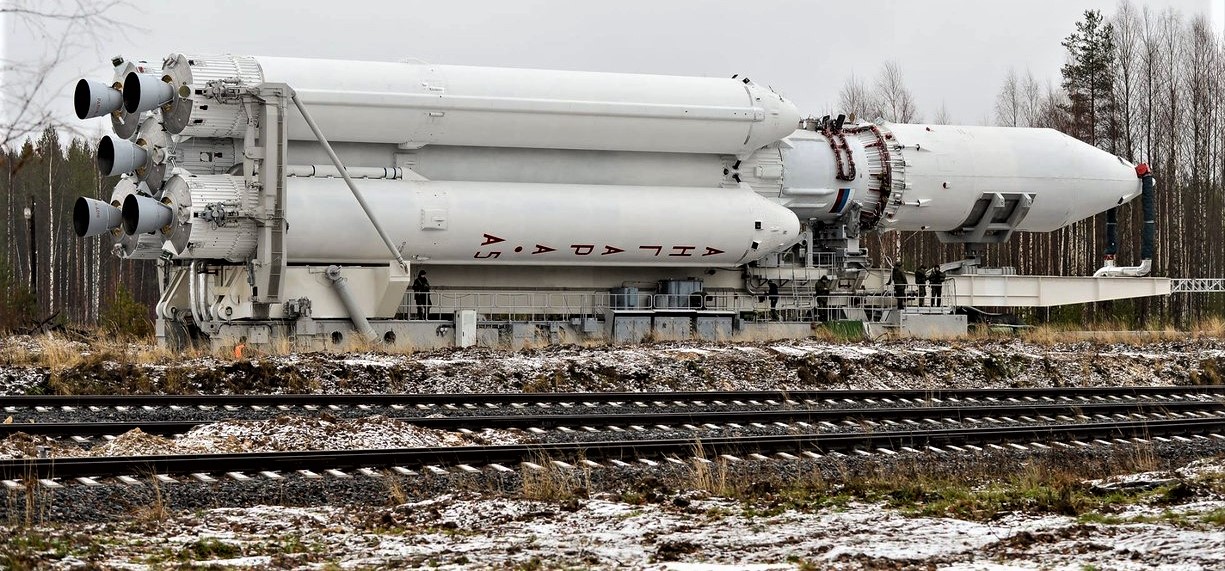

News
Russia quietly shelves development of sole SpaceX Falcon 9-competitive rocket
Russian space agency Roscosmos has indefinitely suspended development of the Proton Medium rocket, once expected to help the country compete with the meteoric rise of SpaceX and the growing field of interested entrants in the commercial launch industry.
As Russia makes a greater push toward Angara rockets, it is sidelining development of Proton Medium, a vehicle ILS hoped would compete head on with SpaceX's Falcon 9. https://t.co/BD6AOusalK
— Caleb Henry (@ChenrySpace) August 30, 2018
The (probable) death of a rocket
In an extraordinary feat of double-speak, freshly appointed Roscosmos director general Dmitry Rogozin – likely a primary source of Proton Medium’s paused development – explained that Russia’s national rocket program would likely experience the “financial collapse of [its] enterprise” if it chose to build “both old and new heavy-duty rockets” simultaneously. Rogozin clearly implied that Angara – a Russian rocket that has flown once (successfully) in 2014 and has a commercial demand about as close to near-zero as possible – was the “new” rocket that Roscosmos ought to solely pursue.
Indeed, upon analyzing the public specifications of Angara A5 and Proton Medium, the two rockets have near-identical theoretical performance characteristics, with higher geostationary transfer orbit payload capabilities (5-6 tons) roughly comparable to Falcon 9 in the SpaceX rocket’s drone ship recovery configuration. As a result, it certainly would make very little sense for Russia to fund and build two rockets with nearly indistinguishable utility – Rogozin certainly is correct in that regard.
However, the space agency director is dumbfoundingly off-base in his suggestion that Angara – not Proton Medium or other proposed alternatives – is the way forward to a financially sustainable Roscosmos. As he himself notes, “eternal state support [of launch vehicles] is impossible and inefficient,” seemingly indicating that he believes any viable state-funded rocket must eventually become a serious commercial competitor, a necessity for a launch vehicle if it’s to sustain itself beyond subsidies (i.e. guaranteed government launch contracts).
https://twitter.com/runnymonkey/status/1030356053882544129
The “old” versus the “new”
The Proton family of rockets – past and present – may not have the most reliable track record or a consistent launch cadence, but nearly any rocket on Earth can lay claim to a more storied launch career when placed next to Angara. Despite the fact that the Russian government itself has funded the development and production of Angara rockets, just a single orbital mission has been launched, and only with a mass simulator (dead weight) as its payload. Since that one-off 2014 launch debut, not even the Russian government itself has chosen to fly state satellites on Angara, instead siding with other successful vehicles in the country’s fleet, including Proton Breeze M and Soyuz-2.
This is almost without a doubt because Angara A5 is the most expensive rocket Russia currently operates, reportedly 30-40% more expensive than Proton M, estimated in 2017 by the US Government Accountability Office to cost roughly $65 million per launch. At roughly a third more than that, an Angara A5 launch presumably costs ~$90 million in a best-case scenario, given that the manufacturing apparatus required to construct the rocket has been maintained on a manifest of exactly zero launches since 2014. In fact, the vehicle was estimated by Russia itself to cost roughly $95 to $105 million per launch back in 2015.
https://twitter.com/runnymonkey/status/1032371653668261888
In an interview with SpaceNews in late 2017, the president of the commercial wing of Russia’s space launch program (known as ILS) frankly stated that “[ILS] needs to target something between $65 [million] and $55 million as the price point [for Proton Medium], and the Angara 5 vehicle will not be able to do that.” In the same interview, the ILS president even went so far as to imply that “Proton Medium was being designed as a purely commercial competitor to SpaceX’s Falcon 9.”
While there is a very slim chance that Proton Medium’s development will be revived after Roscosmos’ internal review, it’s far safer to presume that the vehicle is dead, thus killing Russia’s only tenuous hope of fielding a rocket capable of competing with the likes of SpaceX and Blue Origin. While Roscosmos’ goal is to make Angara (an entirely expendable rocket, might I add) more affordable, it anticipates that the rocket would become cost-competitive with Proton no earlier than 2025.
For prompt updates, on-the-ground perspectives, and unique glimpses of SpaceX’s rocket recovery fleet check out our brand new LaunchPad and LandingZone newsletters!
News
Tesla cleared in Canada EV rebate investigation
Tesla has been cleared in an investigation into the company’s staggering number of EV rebate claims in Canada in January.
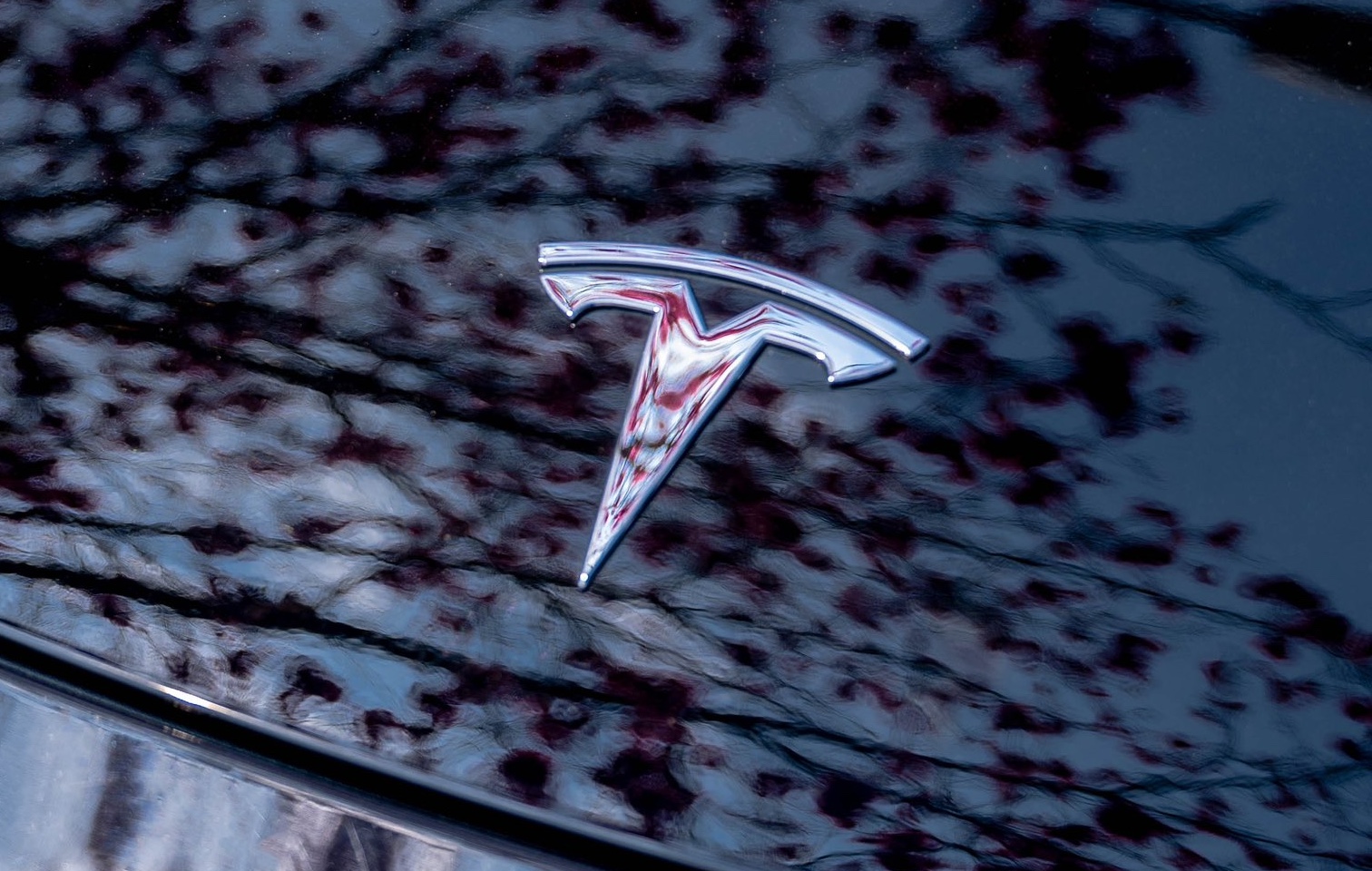
Canadian officials have cleared Tesla following an investigation into a large number of claims submitted to the country’s electric vehicle (EV) rebates earlier this year.
Transport Canada has ruled that there was no evidence of fraud after Tesla submitted 8,653 EV rebate claims for the country’s Incentives for Zero-Emission Vehicles (iZEV) program, as detailed in a report on Friday from The Globe and Mail. Despite the huge number of claims, Canadian authorities have found that the figure represented vehicles that had been delivered prior to the submission deadline for the program.
According to Transport Minister Chrystia Freeland, the claims “were determined to legitimately represent cars sold before January 12,” which was the final day for OEMs to submit these claims before the government suspended the program.
Upon initial reporting of the Tesla claims submitted in January, it was estimated that they were valued at around $43 million. In March, Freeland and Transport Canada opened the investigation into Tesla, noting that they would be freezing the rebate payments until the claims were found to be valid.
READ MORE ON ELECTRIC VEHICLES: EVs getting cleaner more quickly than expected in Europe: study
Huw Williams, Canadian Automobile Dealers Association Public Affairs Director, accepted the results of the investigation, while also questioning how Tesla knew to submit the claims that weekend, just before the program ran out.
“I think there’s a larger question as to how Tesla knew to run those through on that weekend,” Williams said. “It doesn’t appear to me that we have an investigation into any communication between Transport Canada and Tesla, between officials who may have shared information inappropriately.”
Tesla sales have been down in Canada for the first half of this year, amidst turmoil between the country and the Trump administration’s tariffs. Although Elon Musk has since stepped back from his role with the administration, a number of companies and officials in Canada were calling for a boycott of Tesla’s vehicles earlier this year, due in part to his association with Trump.
News
Tesla Semis to get 18 new Megachargers at this PepsiCo plant
PepsiCo is set to add more Tesla Semi Megachargers, this time at a facility in North Carolina.
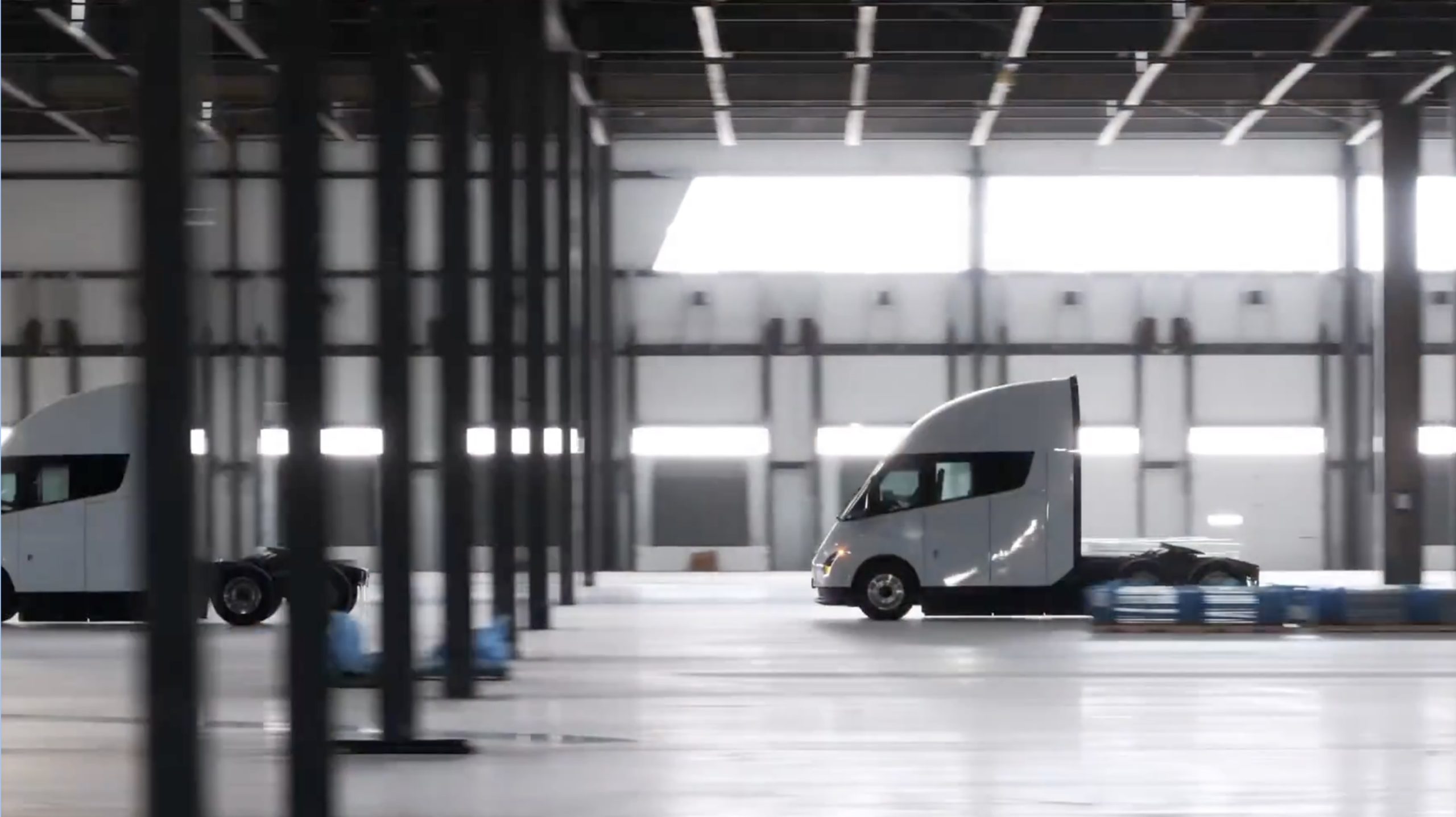
Tesla partner PepsiCo is set to build new Semi charging stations at one of its manufacturing sites, as revealed in new permitting plans shared this week.
On Friday, Tesla charging station scout MarcoRP shared plans on X for 18 Semi Megacharging stalls at PepsiCo’s facility in Charlotte, North Carolina, coming as the latest update plans for the company’s increasingly electrified fleet. The stalls are set to be built side by side, along with three Tesla Megapack grid-scale battery systems.
The plans also note the faster charging speeds for the chargers, which can charge the Class 8 Semi at speeds of up to 1MW. Tesla says that the speed can charge the Semi back to roughly 70 percent in around 30 minutes.
You can see the site plans for the PepsiCo North Carolina Megacharger below.
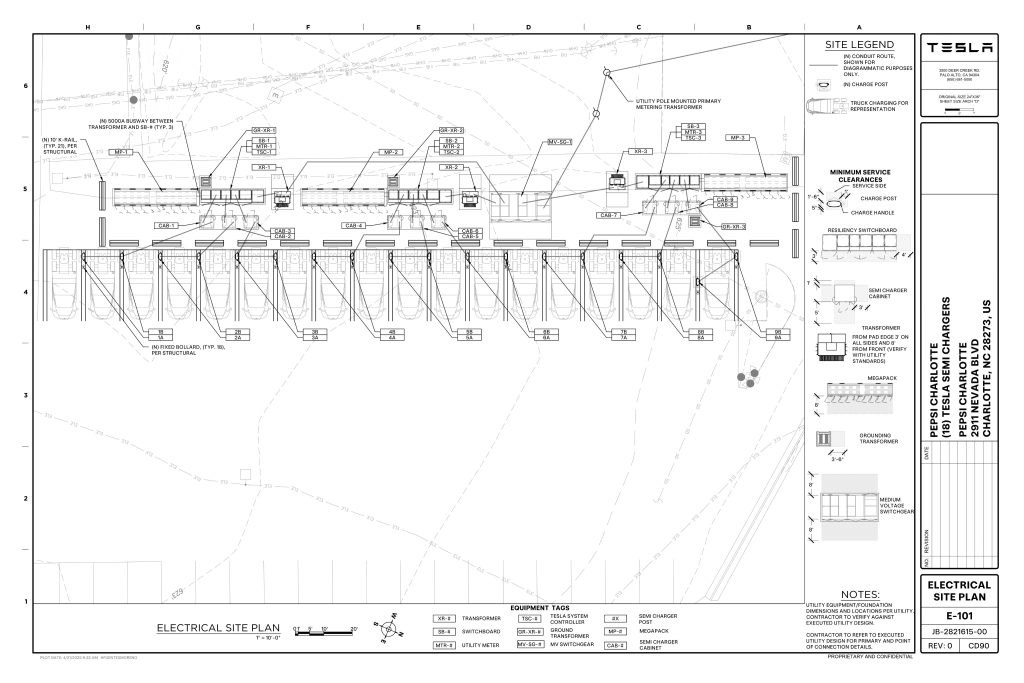
Credit: PepsiCo (via MarcoRPi1 on X)
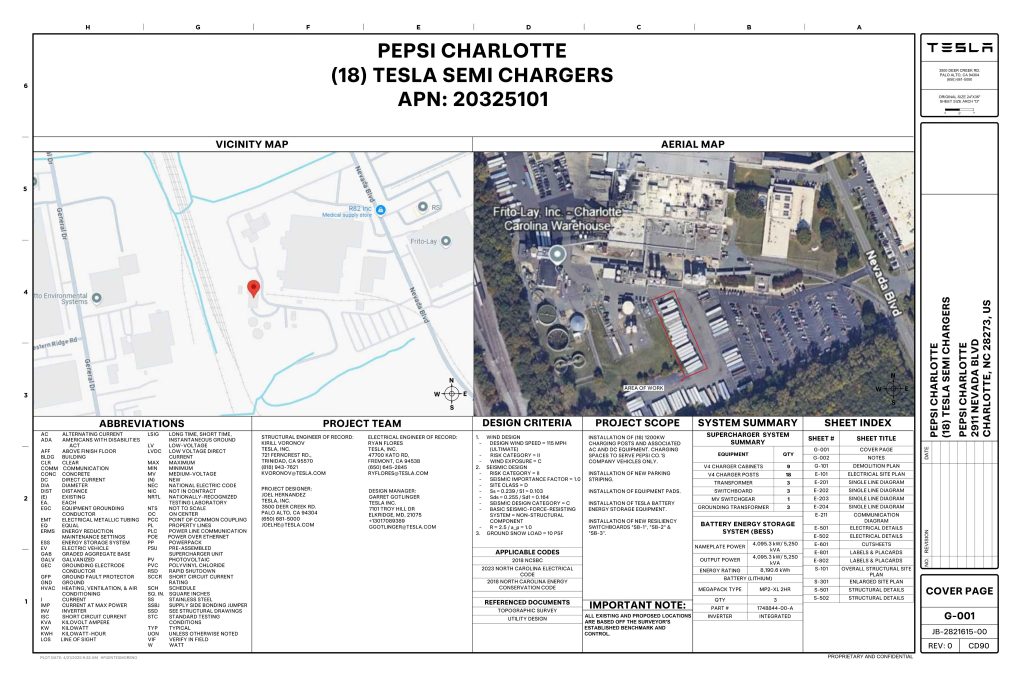
Credit: PepsiCo (via MarcoRPi1 on X)
READ MORE ON THE TESLA SEMI: Tesla to build Semi Megacharger station in Southern California
PepsiCo’s Tesla Semi fleet, other Megachargers, and initial tests and deliveries
PepsiCo was the first external customer to take delivery of Tesla’s Semis back in 2023, starting with just an initial order of 15. Since then, the company has continued to expand the fleet, recently taking delivery of an additional 50 units in California. The PepsiCo fleet was up to around 86 units as of last year, according to statements from Semi Senior Manager Dan Priestley.
Additionally, the company has similar Megachargers at its facilities in Modesto, Sacramento, and Fresno, California, and Tesla also submitted plans for approval to build 12 new Megacharging stalls in Los Angeles County.
Over the past couple of years, Tesla has also been delivering the electric Class 8 units to a number of other companies for pilot programs, and Priestley shared some results from PepsiCo’s initial Semi tests last year. Notably, the executive spoke with a handful of PepsiCo workers who said they really liked the Semi and wouldn’t plan on going back to diesel trucks.
The company is also nearing completion of a higher-volume Semi plant at its Gigafactory in Nevada, which is expected to eventually have an annual production capacity of 50,000 Semi units.
Tesla executive teases plan to further electrify supply chain
News
Tesla sales soar in Norway with new Model Y leading the charge
Tesla recorded a 54% year-over-year jump in new vehicle registrations in June.
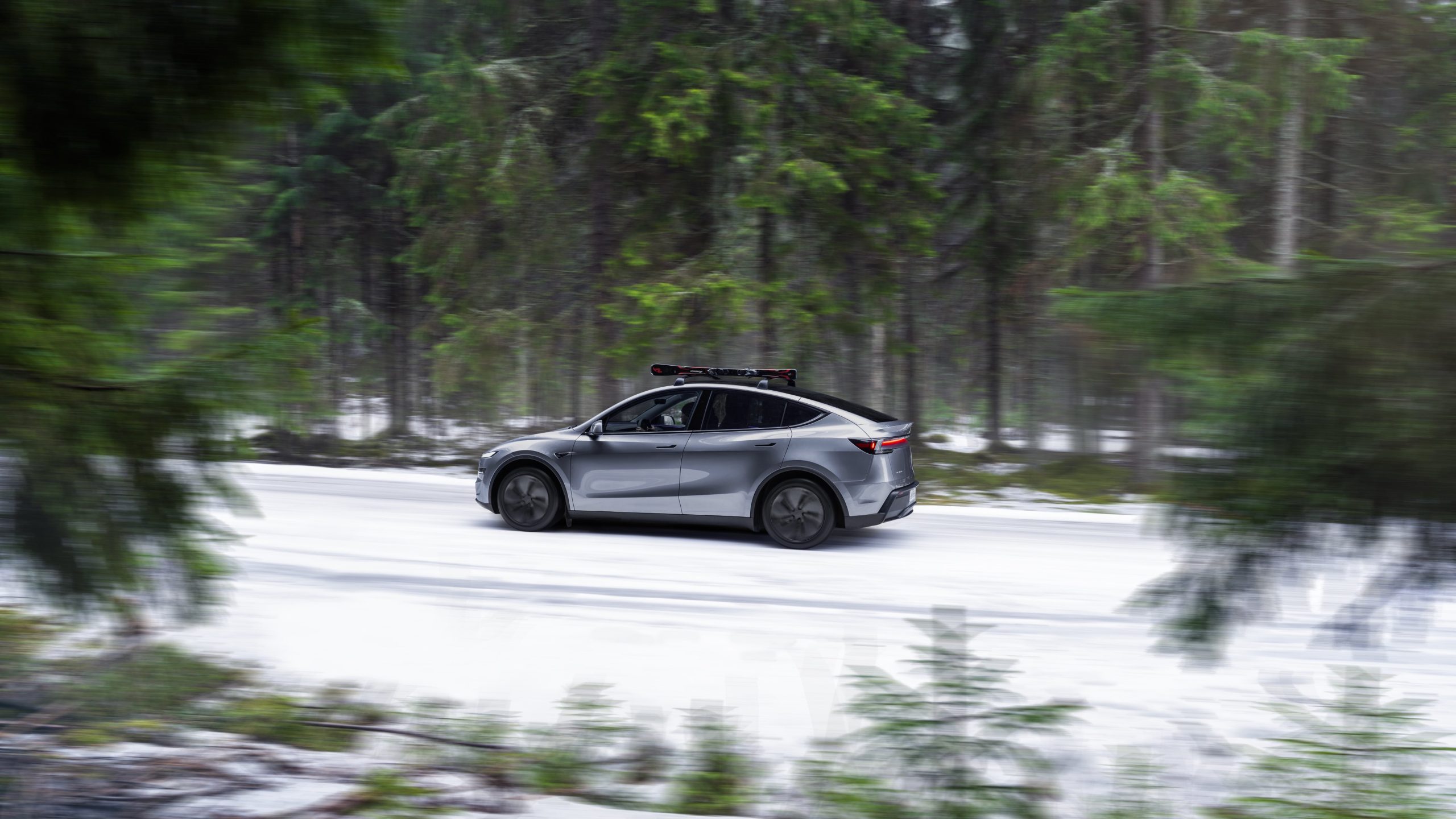
Tesla is seeing strong momentum in Norway, with sales of the new Model Y helping the company maintain dominance in one of the world’s most electric vehicle-friendly markets.
Model Y upgrades and consumer preferences
According to the Norwegian Road Federation (OFV), Tesla recorded a 54% year-over-year jump in new vehicle registrations in June. The Model Y led the charge, posting a 115% increase compared to the same period last year. Tesla Norway’s growth was even more notable in May, with sales surging a whopping 213%, as noted in a CNBC report.
Christina Bu, secretary general of the Norwegian EV Association (NEVA), stated that Tesla’s strong market performance was partly due to the updated Model Y, which is really just a good car, period.
“I think it just has to do with the fact that they deliver a car which has quite a lot of value for money and is what Norwegians need. What Norwegians need, a large luggage space, all wheel drive, and a tow hitch, high ground clearance as well. In addition, quite good digital solutions which people have gotten used to, and also a charging network,” she said.
Tesla in Europe
Tesla’s success in Norway is supported by long-standing government incentives for EV adoption, including exemptions from VAT, road toll discounts, and access to bus lanes. Public and home charging infrastructure is also widely available, making the EV ownership experience in the country very convenient.
Tesla’s performance in Europe is still a mixed bag, with markets like Germany and France still seeing declines in recent months. In areas such as Norway, Spain, and Portugal, however, Tesla’s new car registrations are rising. Spain’s sales rose 61% and Portugal’s sales rose 7% last month. This suggests that regional demand may be stabilizing or rebounding in pockets of Europe.
-

 Elon Musk2 weeks ago
Elon Musk2 weeks agoTesla investors will be shocked by Jim Cramer’s latest assessment
-

 Elon Musk2 days ago
Elon Musk2 days agoxAI launches Grok 4 with new $300/month SuperGrok Heavy subscription
-

 Elon Musk4 days ago
Elon Musk4 days agoElon Musk confirms Grok 4 launch on July 9 with livestream event
-

 News1 week ago
News1 week agoTesla Model 3 ranks as the safest new car in Europe for 2025, per Euro NCAP tests
-

 Elon Musk2 weeks ago
Elon Musk2 weeks agoA Tesla just delivered itself to a customer autonomously, Elon Musk confirms
-

 Elon Musk1 week ago
Elon Musk1 week agoxAI’s Memphis data center receives air permit despite community criticism
-

 News2 weeks ago
News2 weeks agoXiaomi CEO congratulates Tesla on first FSD delivery: “We have to continue learning!”
-

 Investor's Corner2 weeks ago
Investor's Corner2 weeks agoTesla gets $475 price target from Benchmark amid initial Robotaxi rollout

















